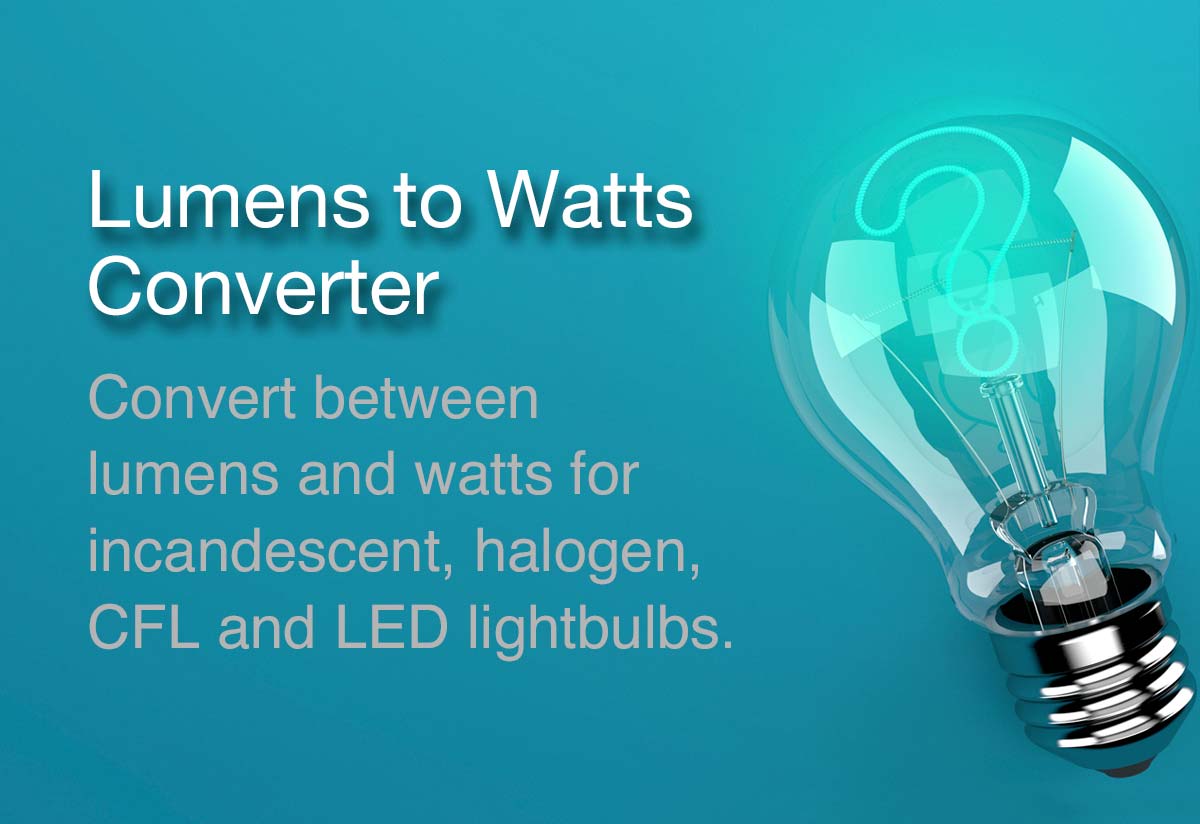Lumens to Watts Converter

Convert between lumens and watts for incandescent, halogen, CFL and LED lightbulbs. Lumens is a unit of luminous flux (brightness), watts is a unit of power.
Lumens to watts: what you need to know
When buying lightbulbs, you'll see commonly see several measurements listed on the packaging. Perhaps the most recognisable one, which has existed for decades, is the wattage. However, times are achanging, and innovation has led us into updating how we rate and reference our bulbs. Enter the lumen.
How are lumens different from watts?
The Watt is a unit of power. The Lumen is a measurement of light output. For our lightbulbs, the lumen defines the perceived brightness of a specific bulb (such as an LED fixture).
In the past, we commonly bought conventional bulbs on the basis of wattage. We knew that a 75W lightbulb produced more light than a 40W bulb. Over time, the technology involved in lightbulb manufacturing has improved to allow the production of more energy-efficient bulbs (CFL, LED). These bulbs produce the same levels of brightness (lumens) as older incandescent and halogen bulbs, but with a fraction of the power (watts). As an example, to produce 480-720 lumens of light might require 40W of power for an incandescent bulb, but only 6-7W for an energy-efficient LED bulb.
If you're in the process of replacing your light bulbs, consider looking at our LED Savings Calculator to see how much money you could save on your energy bill by switching to LED lighting.
Now, it may be that you've been told you need a certain amount of lumens of brightness to light your room, and you may be wondering how what wattage lightbulb you should look for. That's where a conversion can come in handy to guide you.
How to quickly convert lumens to watts
If you want to carry out a conversion from lumens to watts, you can use the following formula:
watts = lumens ÷ (lumens per watt)
What is the (lm/W) figure?
lm/W stands for lumens per watt and is a unit measuring luminous efficacy and energy efficiency - how much visible light is produced for a given amount of electricity. As an example, a 60W incandescent light bulb may produce around 900 lumens, giving it a luminous effacy of 900/60 = 15 lm/W.
What wattage light bulb do I need?
When swapping out your old incandescent or halogen bulbs for more energy-efficient CFL or LED bulbs, you may wish to have a comparison to ensure you get the same level of brightness (lumens) from your bulb. To assist you, we have provided a handy conversion table below. Note that efficacy can vary, often wildly, between manufacturers. So, do check the 'lighting facts' label on the bulb before you buy.
The luminous efficacy of a bulb will vary between manufacturers, but the below is an estimate of what you might expect to get. Note that energy-saving lamps can increase energy efficiency.
Sources of data: Energy Saving Trust and Energy Star.
If you have any problems using this lumens to watts converter, please contact me.
ncG1vNJzZmivp6x7tbTEnJilm6WhrrW70aygrZ1emLyue8SnnKufqWS5trnEp6pmr5GpwbR6z6Gn